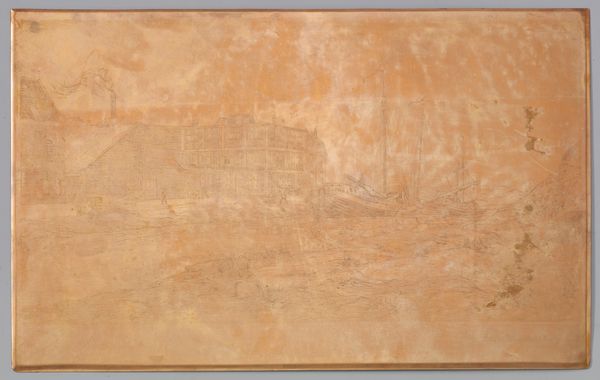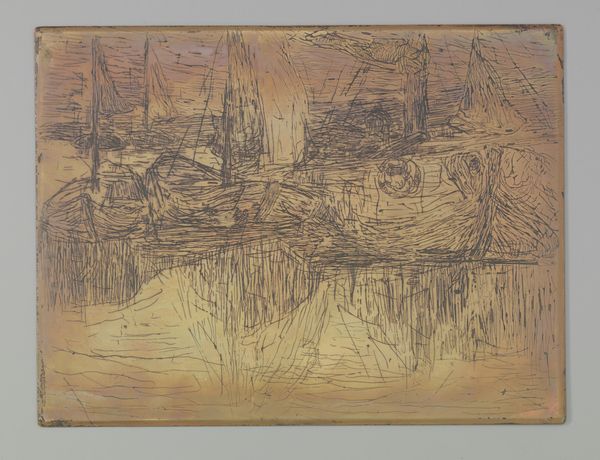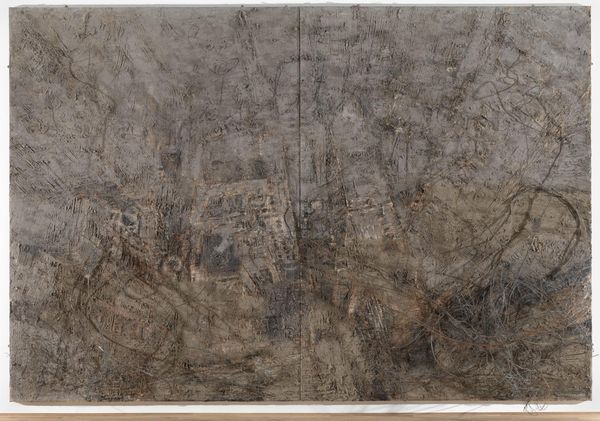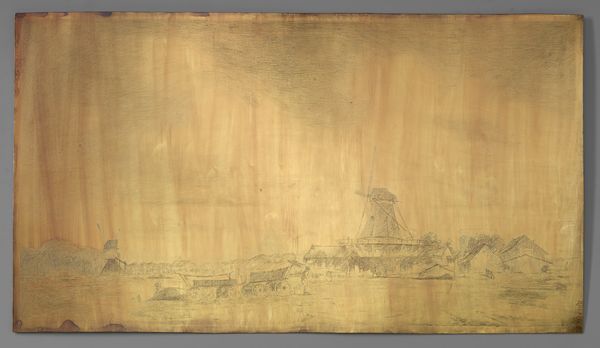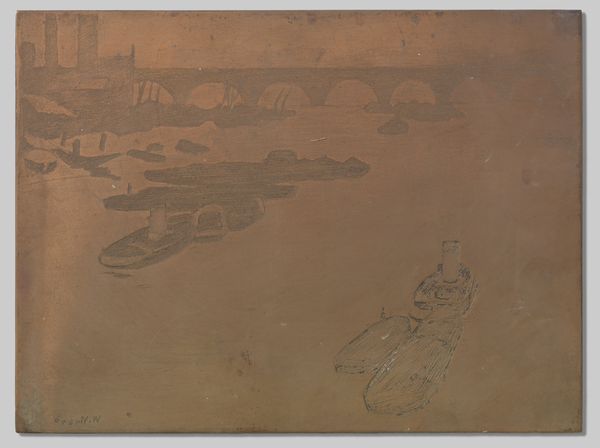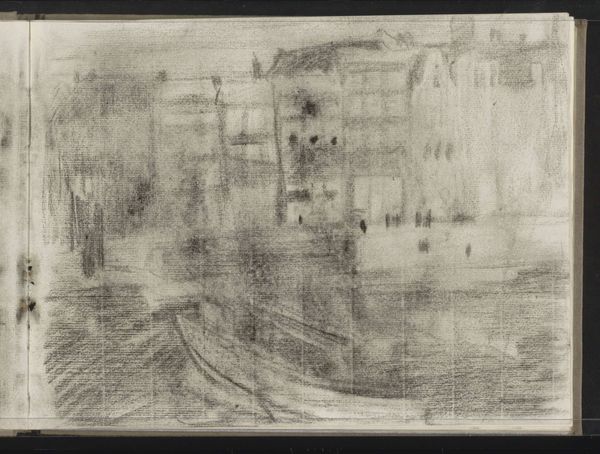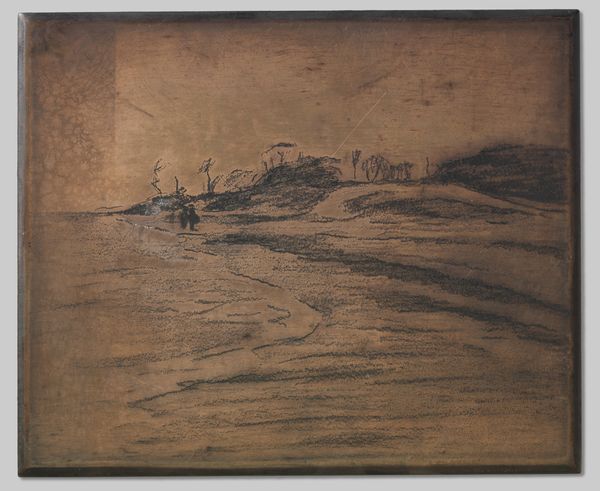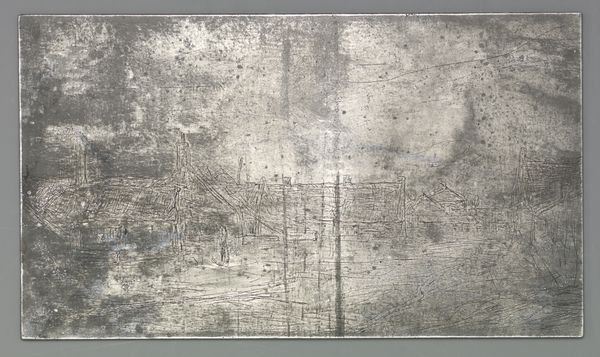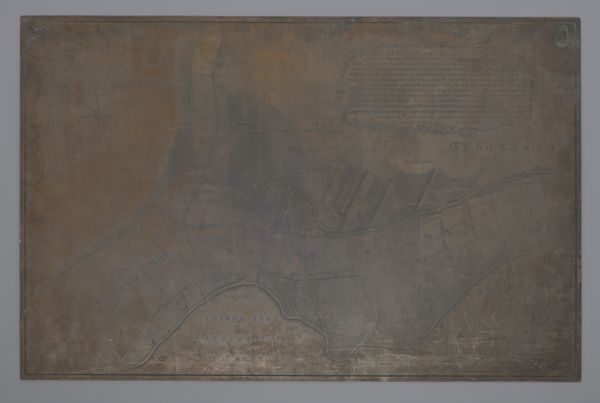
drawing, print, etching
#
drawing
# print
#
etching
#
landscape
#
mixed media
Dimensions: height 152 mm, width 229 mm
Copyright: Rijks Museum: Open Domain
Editor: We're looking at Sir Francis Seymour Haden's "The Amstel Nr.1," created in 1873. It's an etching, a drawing, a print – quite the mix of media! The pale, almost monochromatic tones give it a very dreamy feel. What do you see in this piece that I might be missing? Curator: Oh, "The Amstel," a wistful glance across time, isn't it? It's not just the scene he etches, but also the very act of etching itself, speaking to Haden’s sensibilities. See how the scene shimmers rather than shouts? How the rigging of the ships becomes almost musical notation on the surface of the water? He doesn't just show you the Amstel; he evokes the very *feeling* of it, doesn’t he? Makes you want to drift into the mists, doesn’t it? Does it also remind you how Venice changed when Whistler immortalized the city through the language of etchings and pastels? Editor: I see what you mean. It is very subtle, more about the mood than the detail. Was that a common goal for etchers back then? Curator: Haden believed that etching should be like handwriting. An intimate, personal record of the artist's encounter with the world. Not academic or precise, but felt. It’s as if he’s sketching directly from memory or emotion onto the plate. Can you see how different that approach is from earlier, more exacting forms of printmaking? Editor: That makes a lot of sense. I guess I was expecting something sharper, more defined. Curator: Ah, but sometimes the half-seen is more evocative than the clearly delineated, wouldn't you agree? What started as drawing becomes transformed through its medium into a kind of lived meditation, where we feel both the touch of the world on the artist and the artist’s sensibility making it anew. Editor: Absolutely. Now I’m seeing it in a whole new light. Thanks for sharing that! Curator: My pleasure. It's always rewarding to see a fresh pair of eyes appreciate the quieter voices in art history.
Comments
No comments
Be the first to comment and join the conversation on the ultimate creative platform.

